Stream Live Video Online
Secure Live Video Streaming and Broadcasting Platform
Dacast is the leading streaming platform for any Organization. Our low latency online live video solution runs on top-tier CDNs, is easy-to-use, and comes with 24/7 online and phone support.
No credit card required. By clicking Start Free Trial you agree to ourterms and conditions.
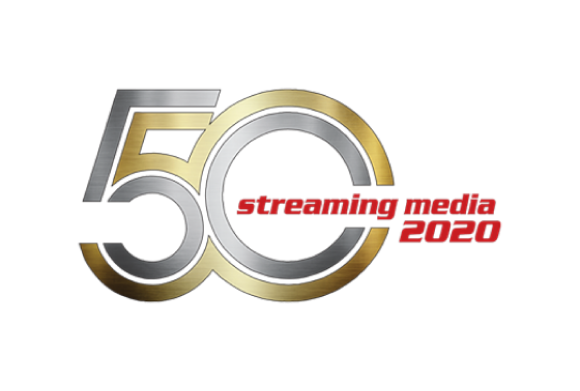
High Performance with Top-Tier CDNs
Get the best streaming quality at no extra cost
Stream online live video securely with the world’s best video CDNs. Access our 24/7 live streaming platform with full scalability and compatibility. Tell Me MoreLow Latency Live Video Streaming
Optimize your viewers’ experiences
Get access to an end-to-end low latency online video streaming solution with 10-second latency or less, including a free direct HLS software encoder. Start Now
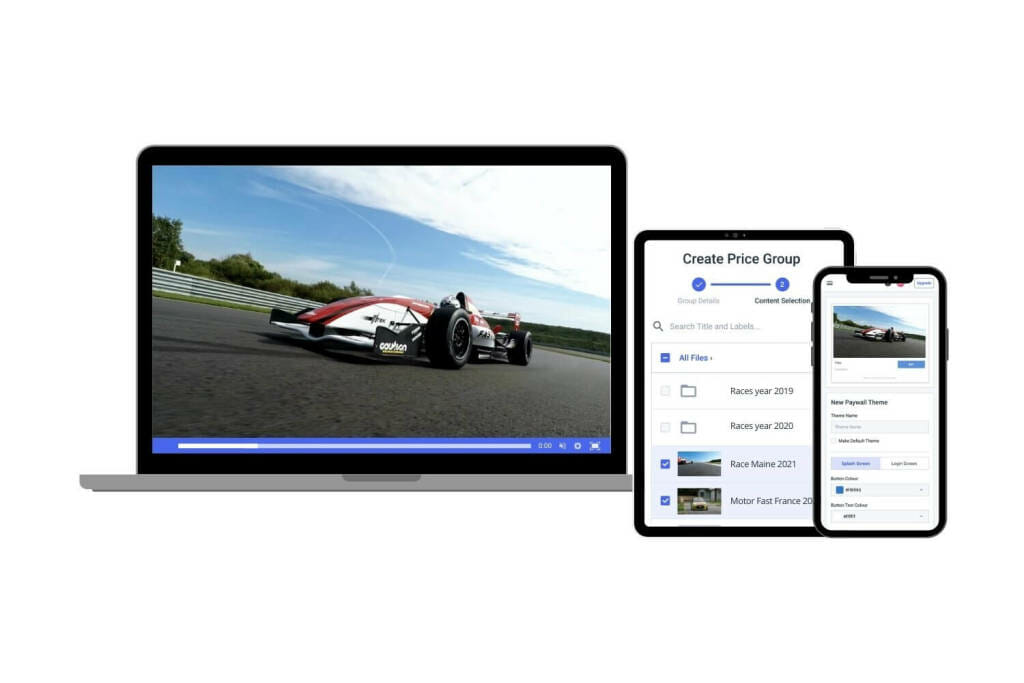


Expo Video Portal
Create a Branded Video Streaming Showcase
Display your live streams in an immersive video gallery, and customize the landing page to reflect your brand. With Expo, you can quickly put together a professional web-like gallery for featured content. I'm InterestedEmbed Live Video Anywhere
Maintain 100% control over your content
Stream live video on your website with no restrictions. Use your own branding and control where your video content can be accessed. Let's Go
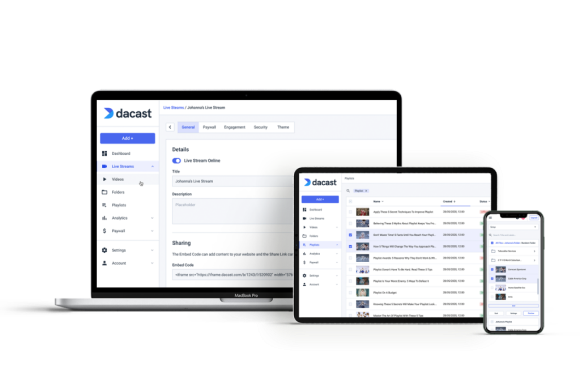

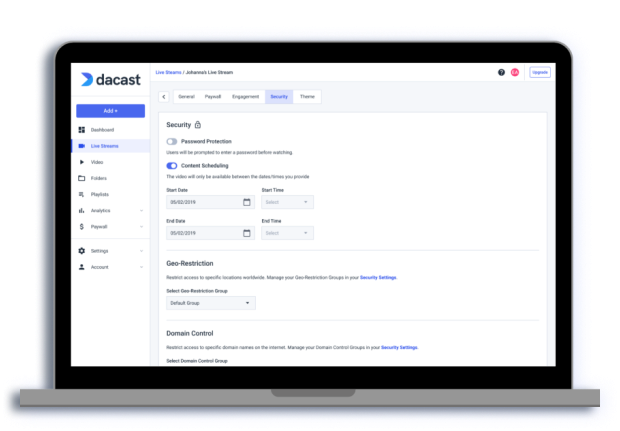
Video Streaming Security
Prioritize Live Video Online
Keeping your live stream video in the right hands is important. That’s why Dacast gives you full control over your streaming content with a slew of powerful security features. Stream SecurelyMonetize your Live Events
Generate revenue from your online video streaming
Start generating revenue instantly with ads or our built-in paywall. Use pay-per-view, subscriptions, or both. Take payments via credit card or PayPal. Learn More
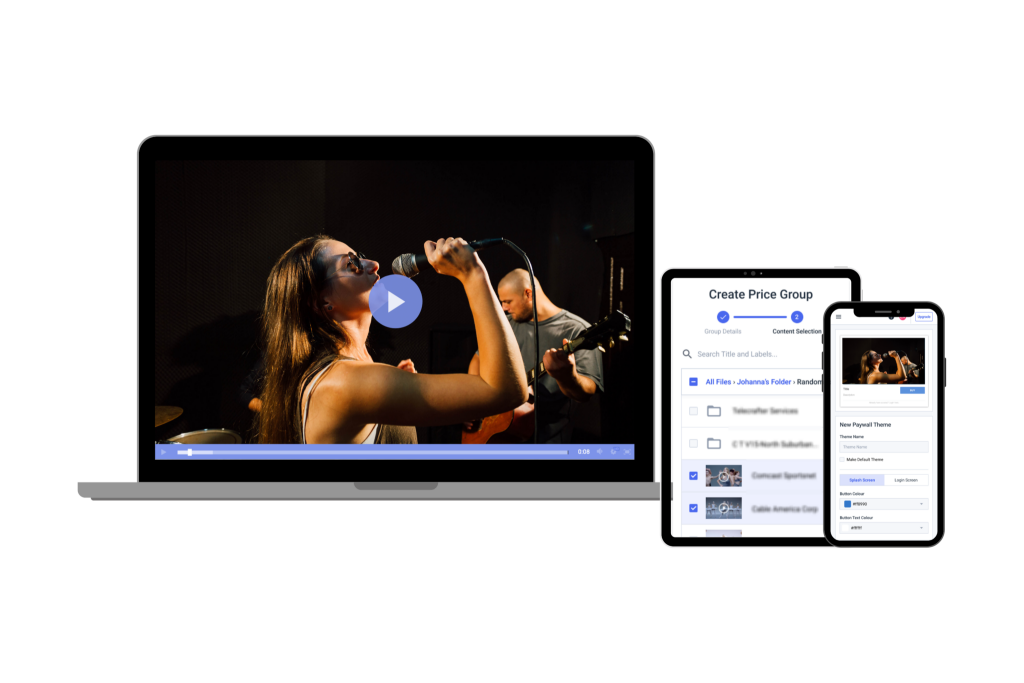
Live Streaming Made Easy
Stream Live Video Online with Top Platform Features


Facebook Streaming
Broadcast on social networks
Skyrocket your audience and stream live video across all social media networks.
Learn More

Real Time Analytics
Measure your performance live
Track and optimize the performance of your online video streaming in real time.
Explore Analytics

Live Countdown
Generate interest
Build audience excitement and ensure your viewers won’t miss the big event.
Get Started“The support that Dacast offers is particularly good compared to other streaming providers, making them a clear choice for my business.”
CEO at ComeSee TV
24/7 Technical Support
The reliable help you need, when you need it
Our customer service team is here 24/7 to help you make the most of your streaming solution. Access a comprehensive knowledge base and dynamic online community of professionals.
SupportDacast's Most Popular Features


Mobile Streaming
Stream Live to Smartphones
Our HTML5 video player ensures compatibility with modern devices and browsers. No configuration is required, whether on a smartphone or a smart TV.
Learn More

White-label Platform
Your Logo, Your brand
Customize our video player with your logo and colors to put your brand front and center. The look and feel of your content is completely up to you.
Show Me How

High-Definition
Broadcast in Full HD Quality
Deliver pristine, broadcast-quality video up to full HD 1080p resolution. Leverage multi-bitrate technology to ensure that every viewer has an optimal experience.
Stream in HD

API-based OVP
Build New Applications
Access features and integrate them into your own digital media workflow. Build your own OTT video platform using our RESTful APIs, or mobile apps with our iOS and Android SDKs.
Explore Video API

Secure Video Upload
Manage your video library
Bulk upload your video and add the layer of security your want. Access more video uploading and security tools via our advanced video hosting platform.
Upload Securely

Video Transcoding
Encode Video Files
Use our transcoding services to offer your viewers the video quality they need on any device.
Let's GoBest Streaming Pricing
Feature-rich and cost-competitive
Dacast is the only video platform offering high-performance live streaming and video hosting features at the best prices on the market.
Check It Out Connect
Connect
 Events
Events Business
Business Organizations
Organizations Entertainment and Media
Entertainment and Media API
API Tools
Tools Learning Center
Learning Center Support
Support Support Articles
Support Articles